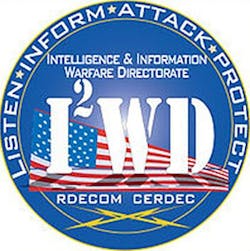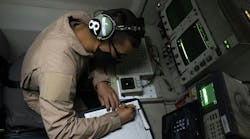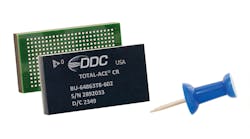ABERDEEN PROVING GROUND, Md. 23 Dec. 2012. U.S. Army researchers will brief industry on 18 Jan. 2013 about the cloud computing technologies used and under development in the Army Intelligence and Information Warfare Directorate (I2WD), and about the directorate's technology shortfalls and future needs.
The industry day briefings, sponsored by the I2WD's Tactical Cloud Integration Laboratory (TCIL), will be from 9 a.m. to 2:30 p.m. in Building 6000 at Aberdeen Proving Ground 35 miles northeast of Baltimore.
Army researchers will provide an overview of current fielded technologies, of future technologies under evaluation, and of capabilities being sought. Those attending will receive a list with descriptions of the capabilities that TCIL researchers want.
Briefings will revolve around the Army's component of the U.S. Department of Defense (DOD) Distributed Common Ground/Surface System (DCGS), which is called DCGS-A, and this program's need for cloud computing and data storage.
The DGCS provides a framework for the military to develop a common interoperable family of systems to process and communicate intelligence, surveillance, and reconnaissance (ISR) sensor data. The DCGS-A supports targeting, sensor management, and information use. The system provides sensor fusion to enable intelligence analysts to glean information and develop an intelligence picture.
Army researchers say the DCGS-A must establish operational clouds at core, regional, and edge nodes to support Army intelligence data collection and analysis. The cloud provides the ability to ingest data once, move data rarely, and reuse data often, Army researchers say.
Current TCIL efforts include video processing, predictive analytics, semantic processing, geospatial, collection management, cloud performance, and edge node development.
The TCIL uses several open-source cloud technologies on industry-standard hardware in a traditional rack configuration that can be mounted inside a secure shipping container and deployed anywhere in the world.
The TCIL system includes a Hadoop Distributed File System (HDFS), which is an open-source version of the Google file system capable of scaling to the exabyte level; a Hadoop Core Parallelization Infrastructure, which is an open-source version of the map/reduce programming model that uses parallel computing; a Cloudbase similar to Google’s BigTable design that sits on Hadoop and stores structured data at the petabyte level; Condor, an open-source management infrastructure for cloud computing; and Puppet, which automates software configuration and deployment, updates, inventory tracking, and system management for the cloud.
After the industry day, companies interested will have 45 days to present white papers to I2WD staff to demonstrate their capabilities and how government researchers might be able to use them.
Companies interested in attending the industry-day briefings should contact the Army's Robert Czajkowski by e-mail at [email protected] or Michael Hinman of Booz Allen Hamilton at [email protected].
More information is online at https://www.fbo.gov/notices/09e154d470de5a8cd4e7a5c3d67fcf57



